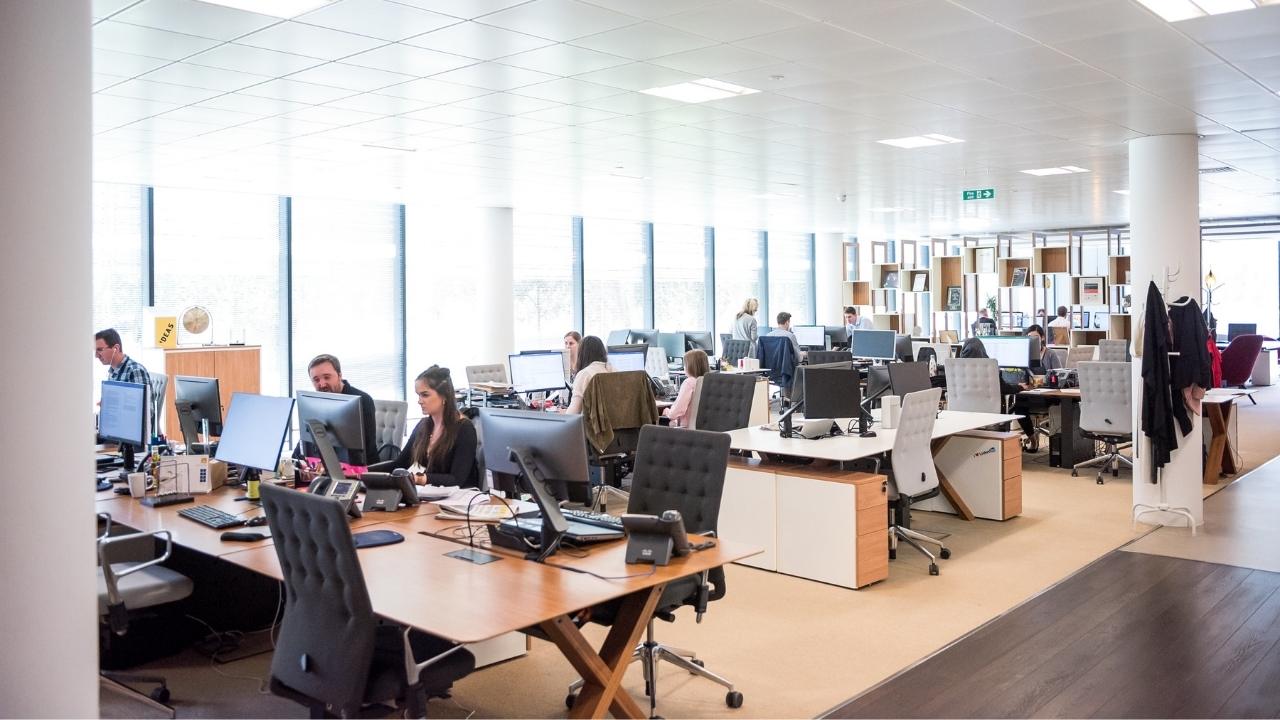The hybrid work model has emerged as the top post-pandemic workplace strategy for companies trying to find balance between the old and new ways of working.
Hybrid models typically take two forms: the company chooses when employees come into the office, or employees discuss their preferred schedules with managers. However, both of these methods usually means companies see decreased occupancy rates throughout the work week.
Transitioning to this new way of operating means there will be an impact on commercial real estate, design and more. This can mean a variety of things, from businesses cutting down their real estate footprint to simply incorporating hot desks.
Because so many professionals have worked from home over the last 17 months, companies have downsized their physical space as they move towards a hybrid model.
Hot desking has also spiked in popularity in recent months, which provides unassigned seating to staff throughout the work day. Doing so allows companies to use less office space, adopt rotating schedules and cut their overall operational costs.
For instance, toy company LEGO has adopted flexible work zones, hot desks, and huddle rooms. Additionally, bank Citigroup has been allowing staff to choose where they sit every day, including the CEO who does not have a private office.


 Dr. Gleb Tsipursky – The Office Whisperer
Dr. Gleb Tsipursky – The Office Whisperer Nirit Cohen – WorkFutures
Nirit Cohen – WorkFutures Angela Howard – Culture Expert
Angela Howard – Culture Expert Drew Jones – Design & Innovation
Drew Jones – Design & Innovation Jonathan Price – CRE & Flex Expert
Jonathan Price – CRE & Flex Expert










